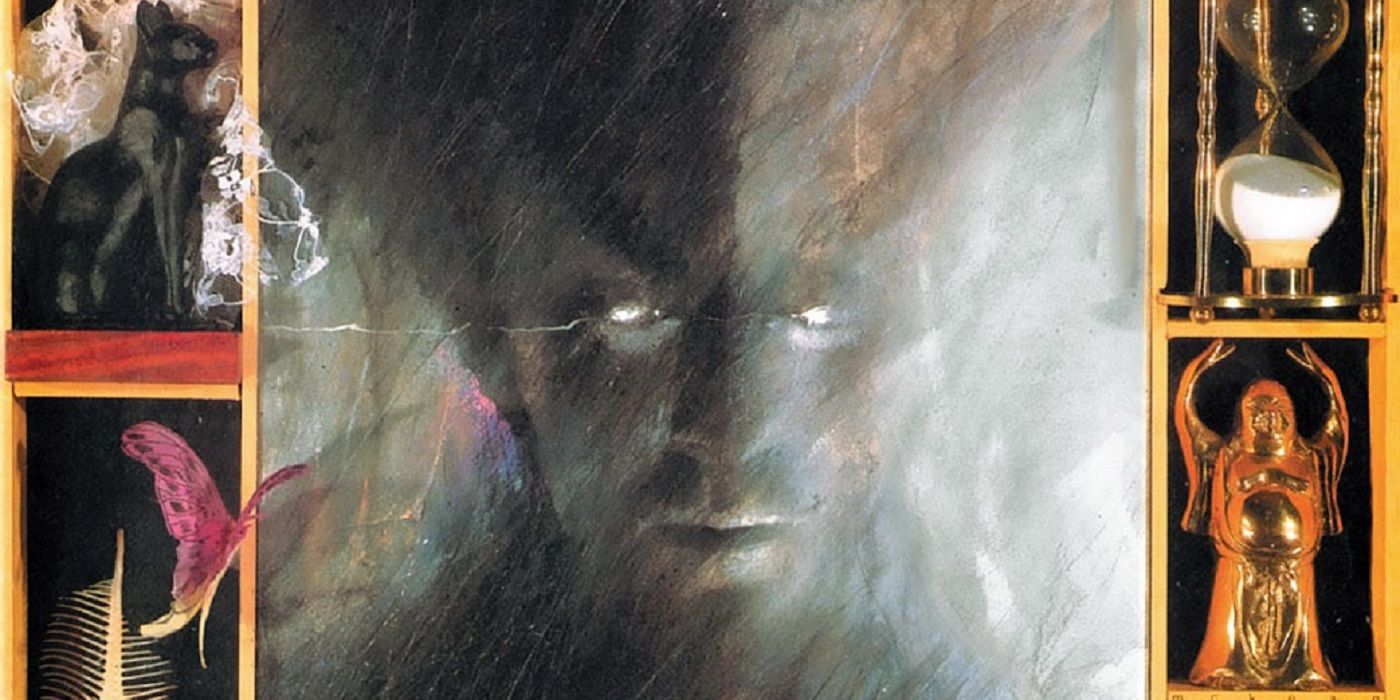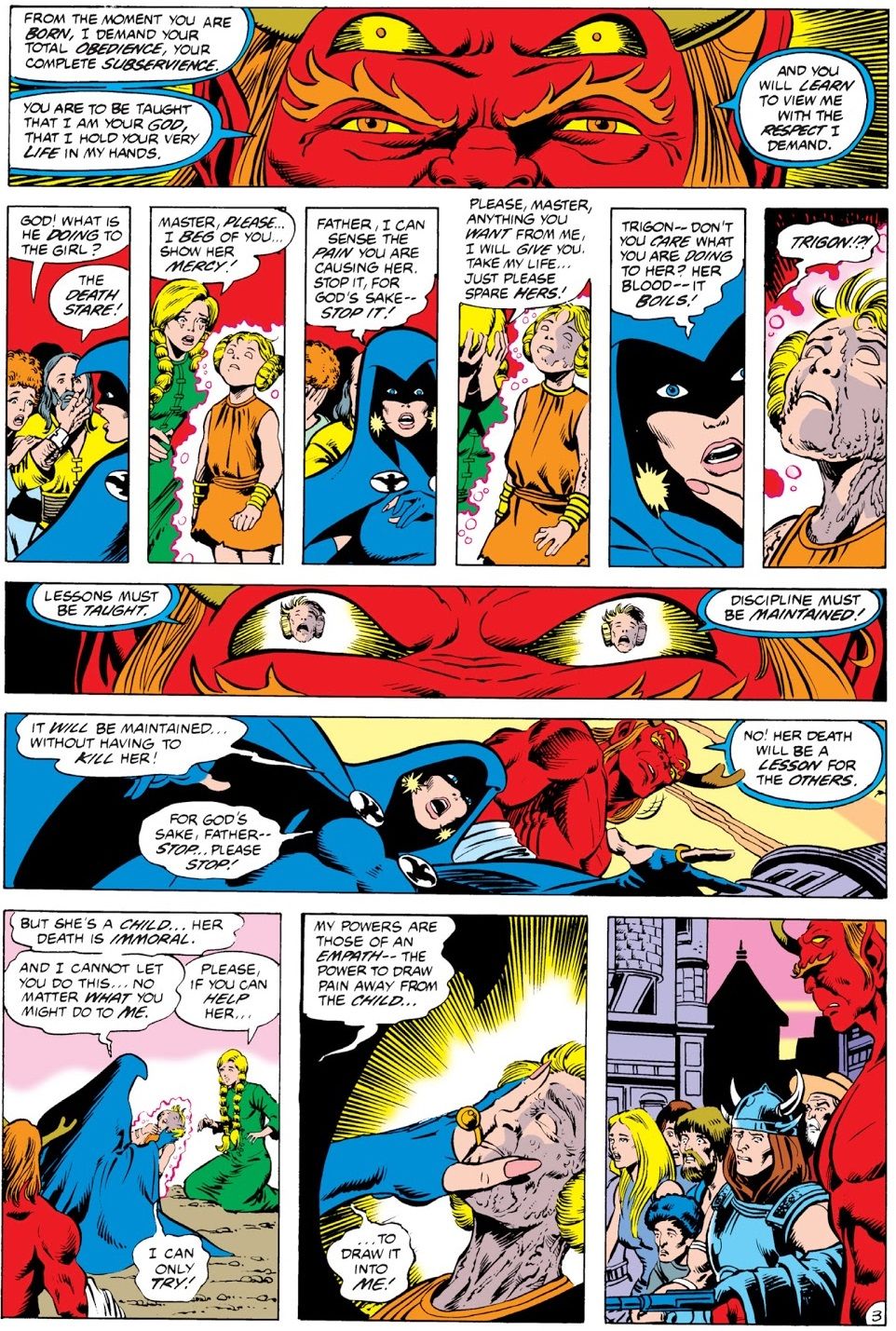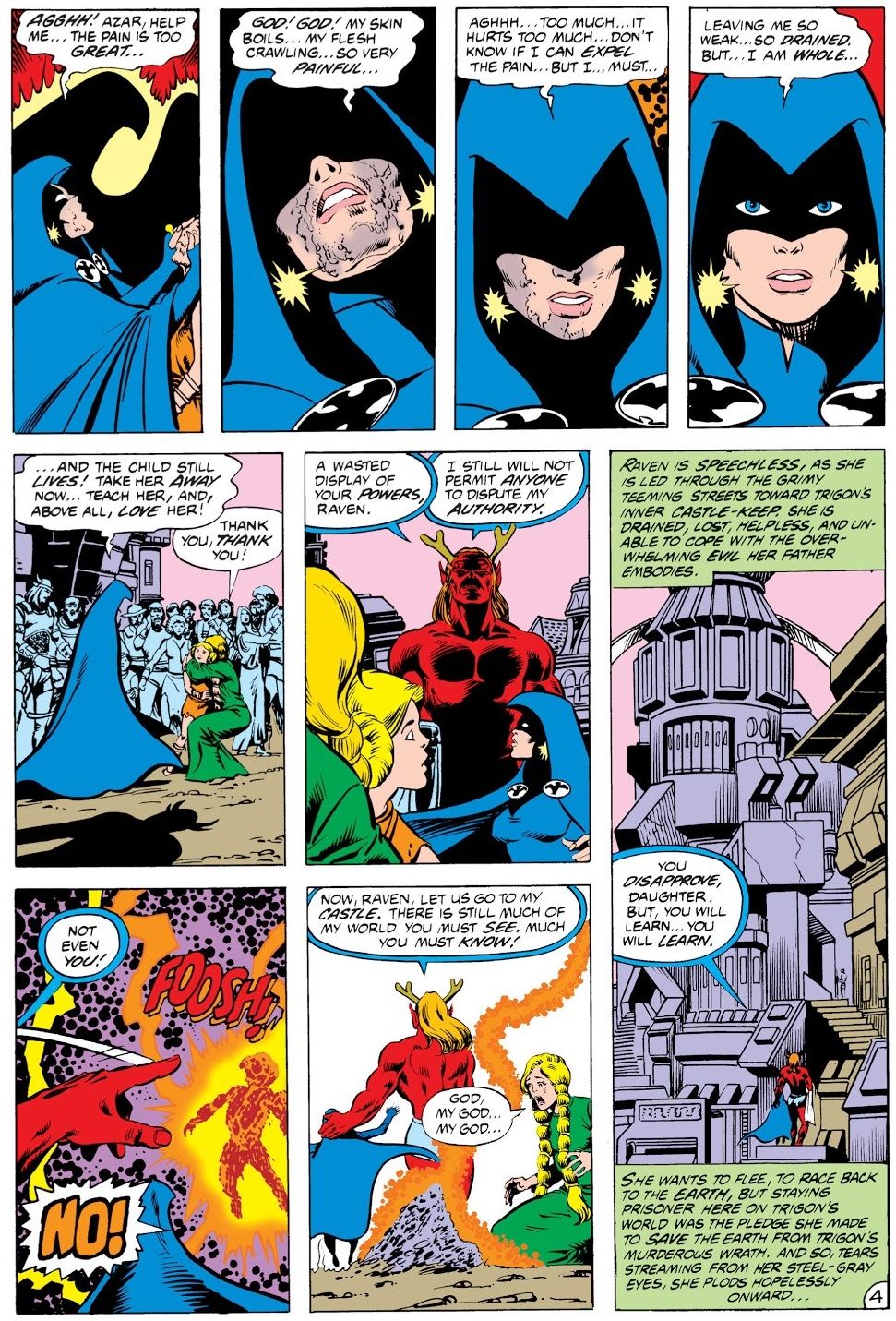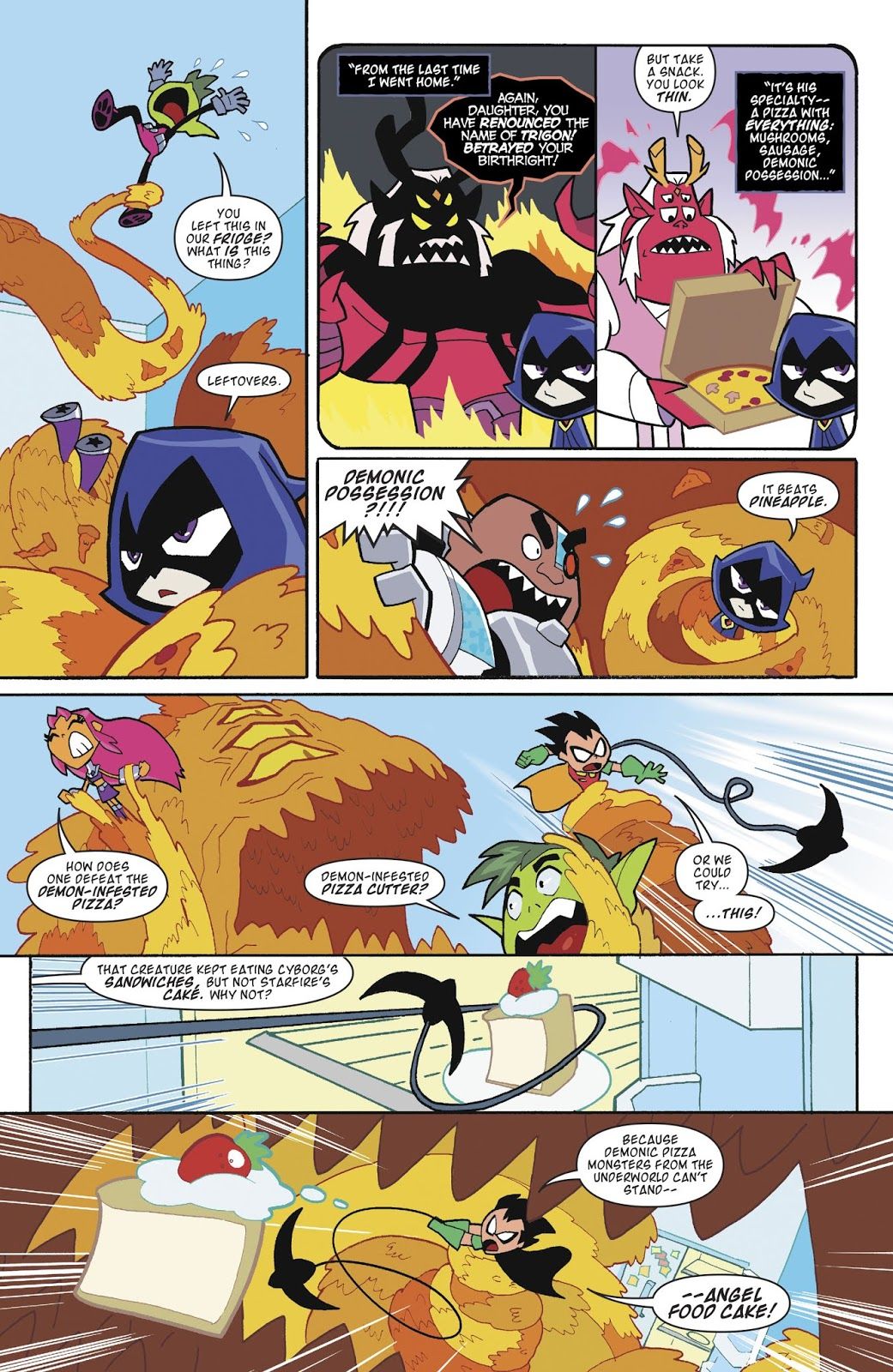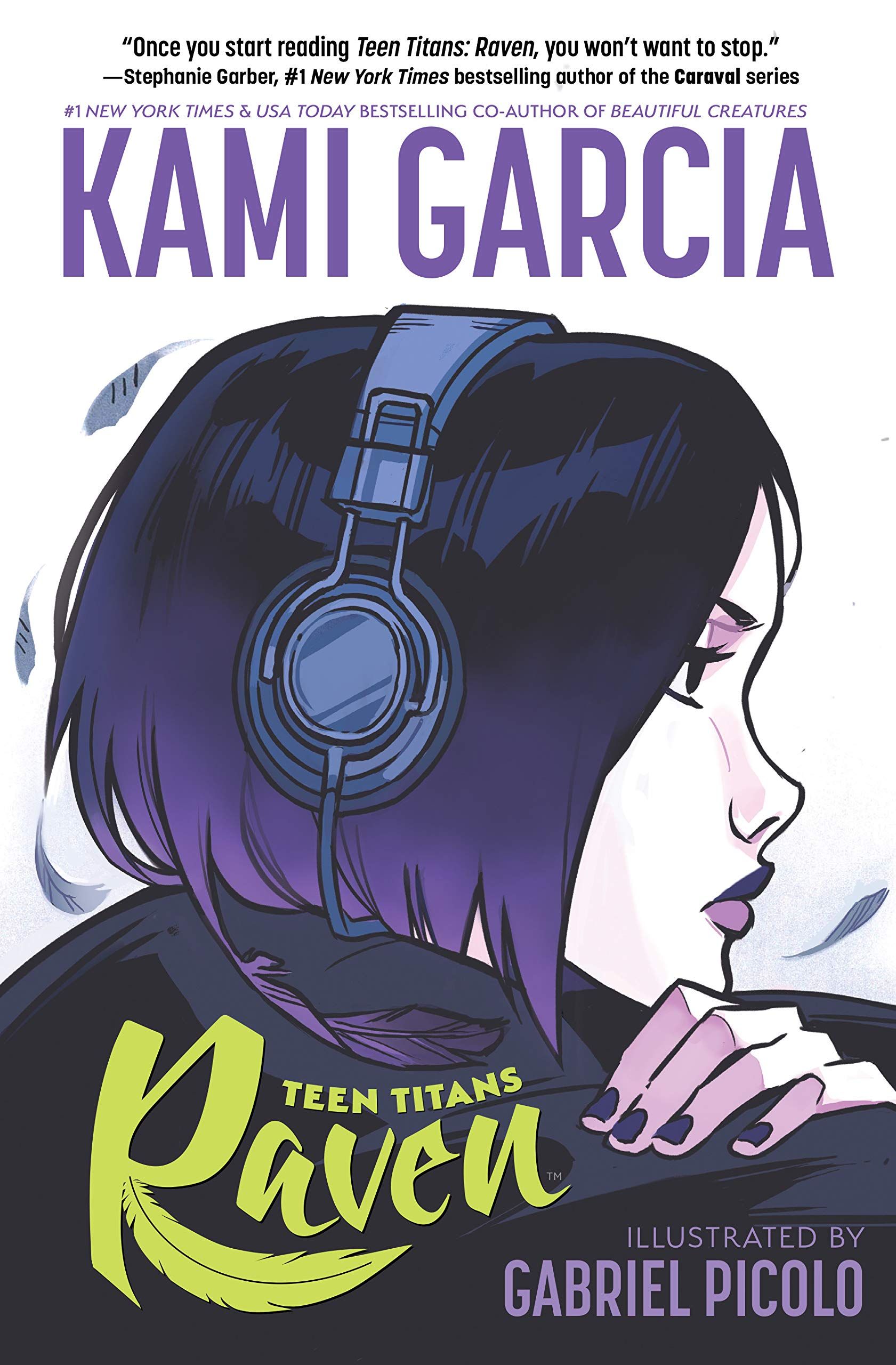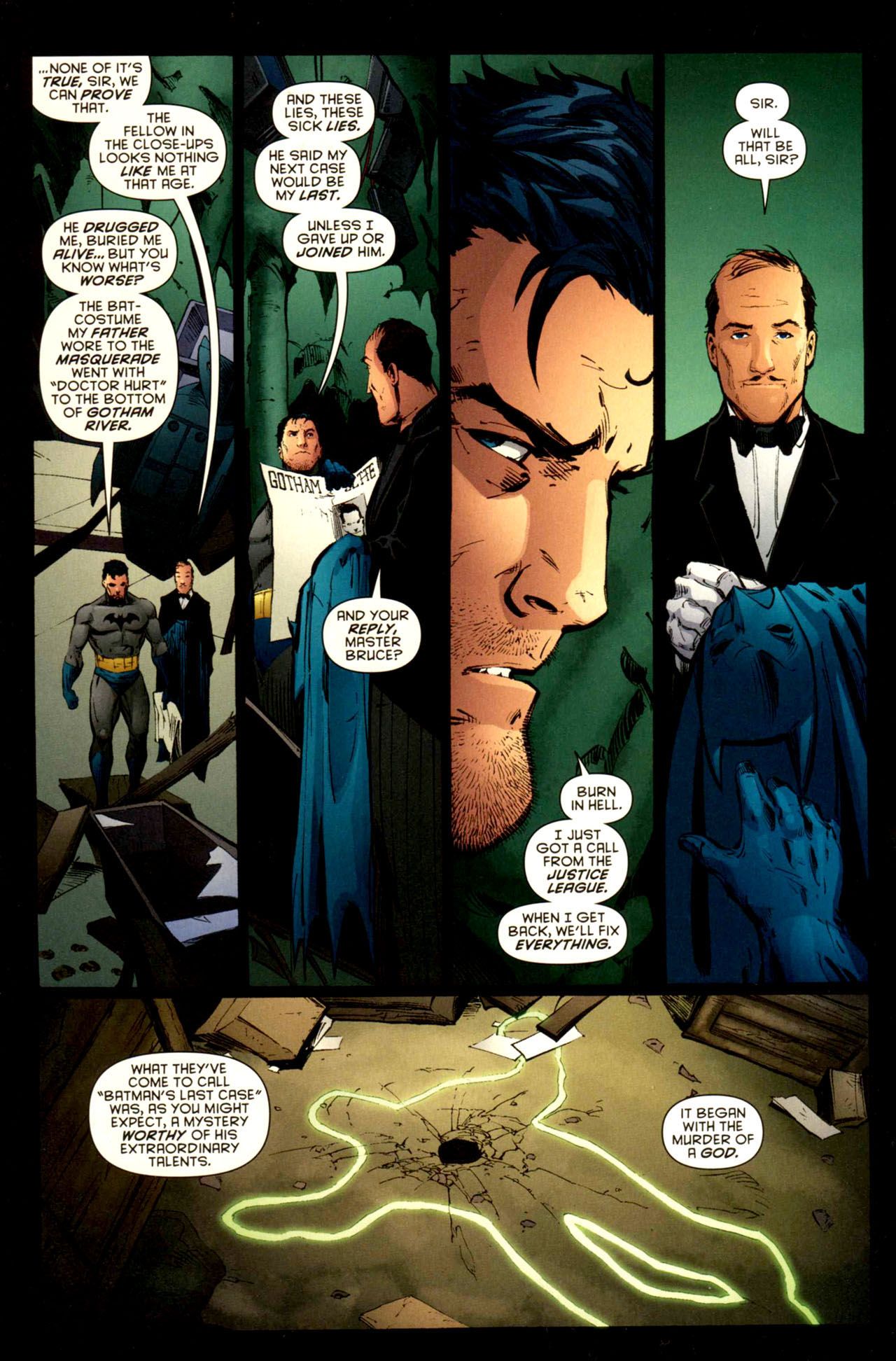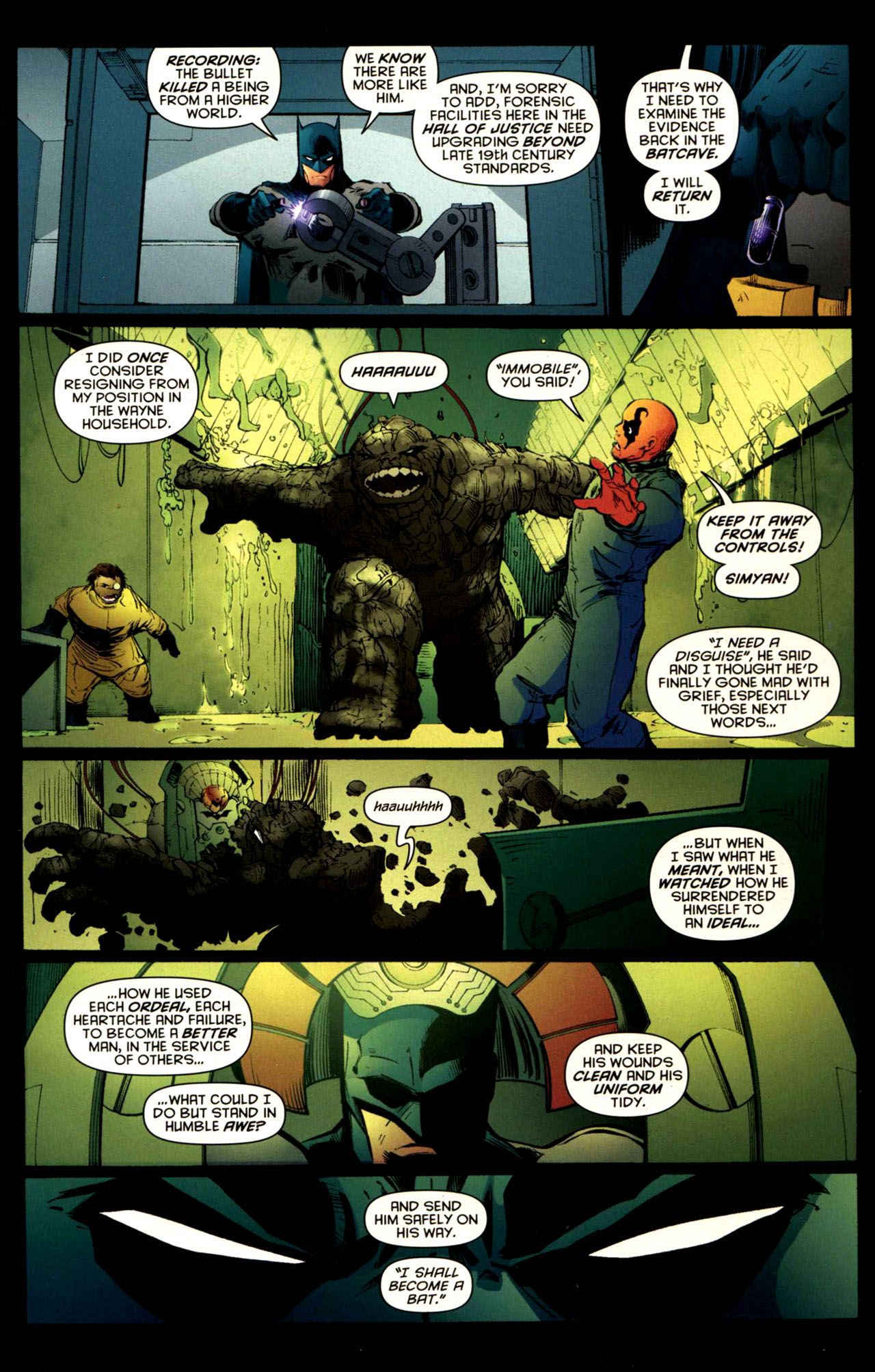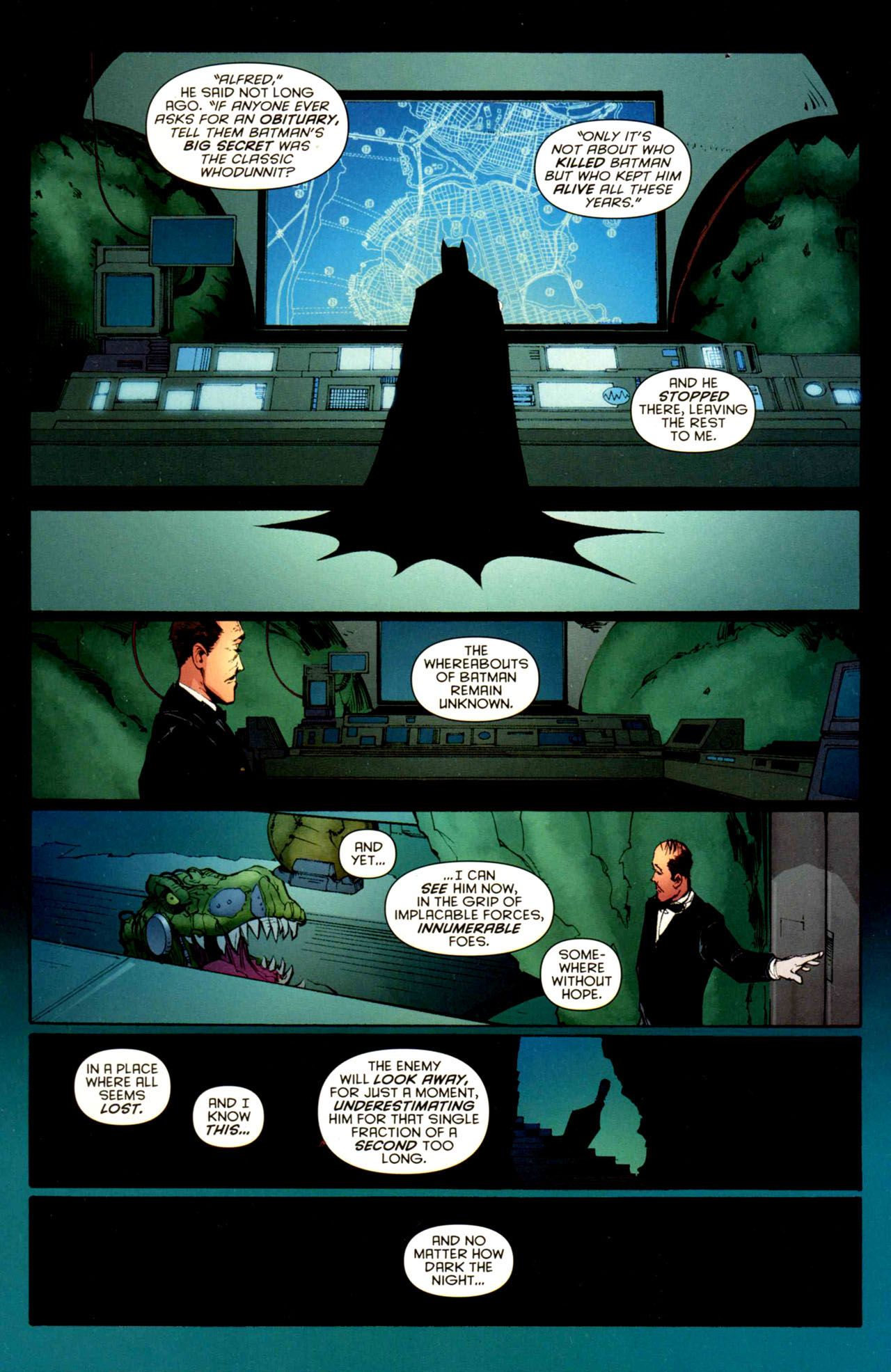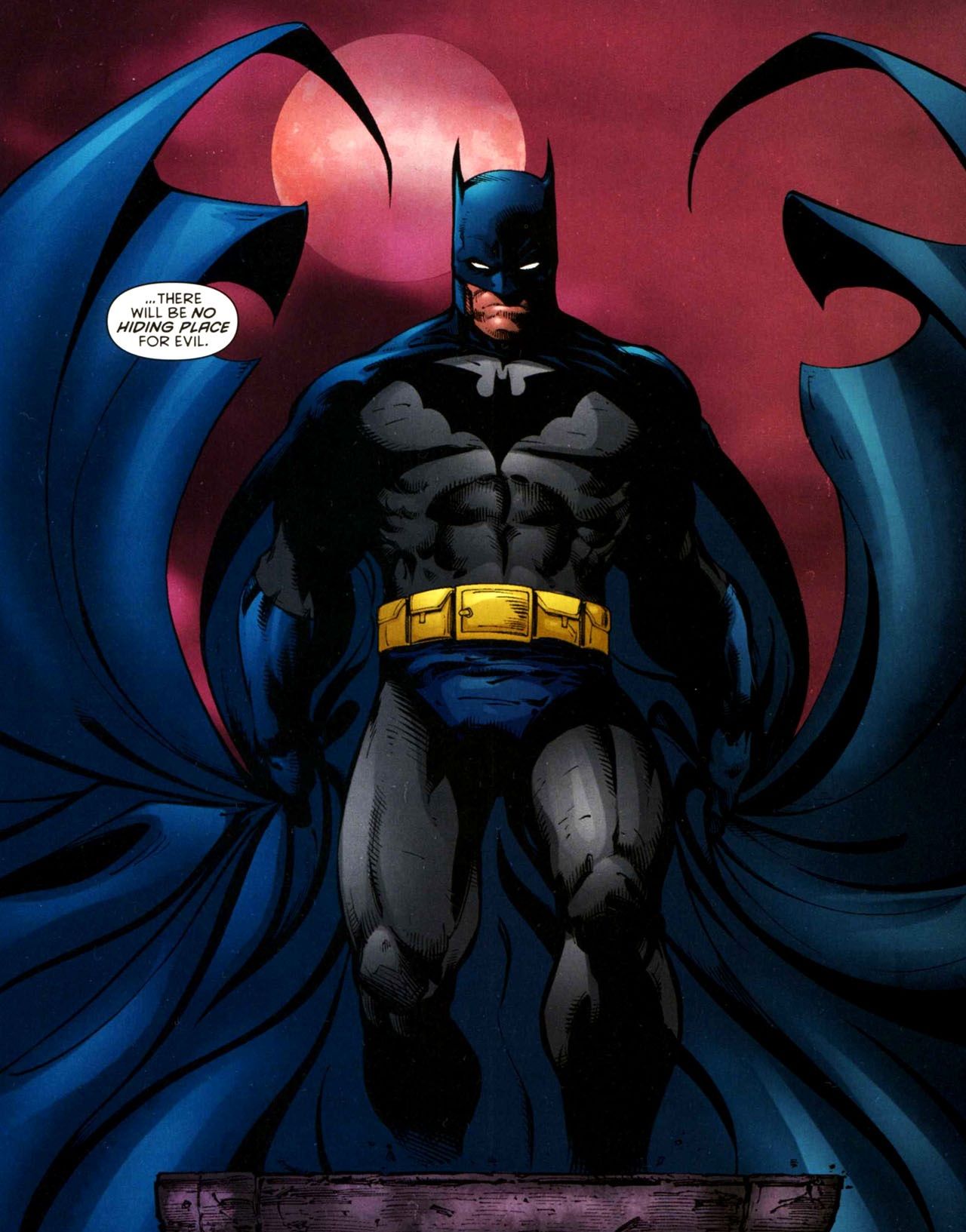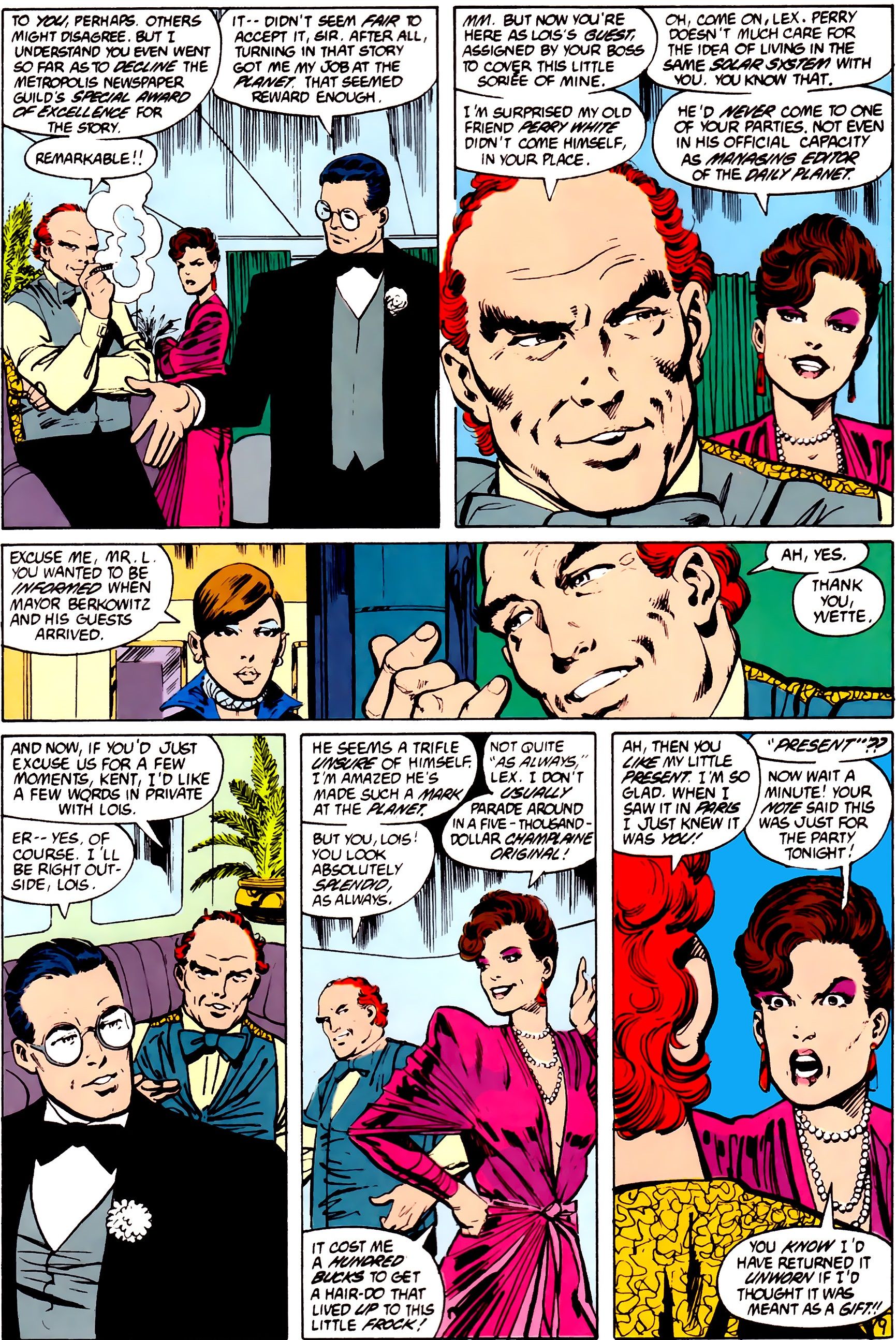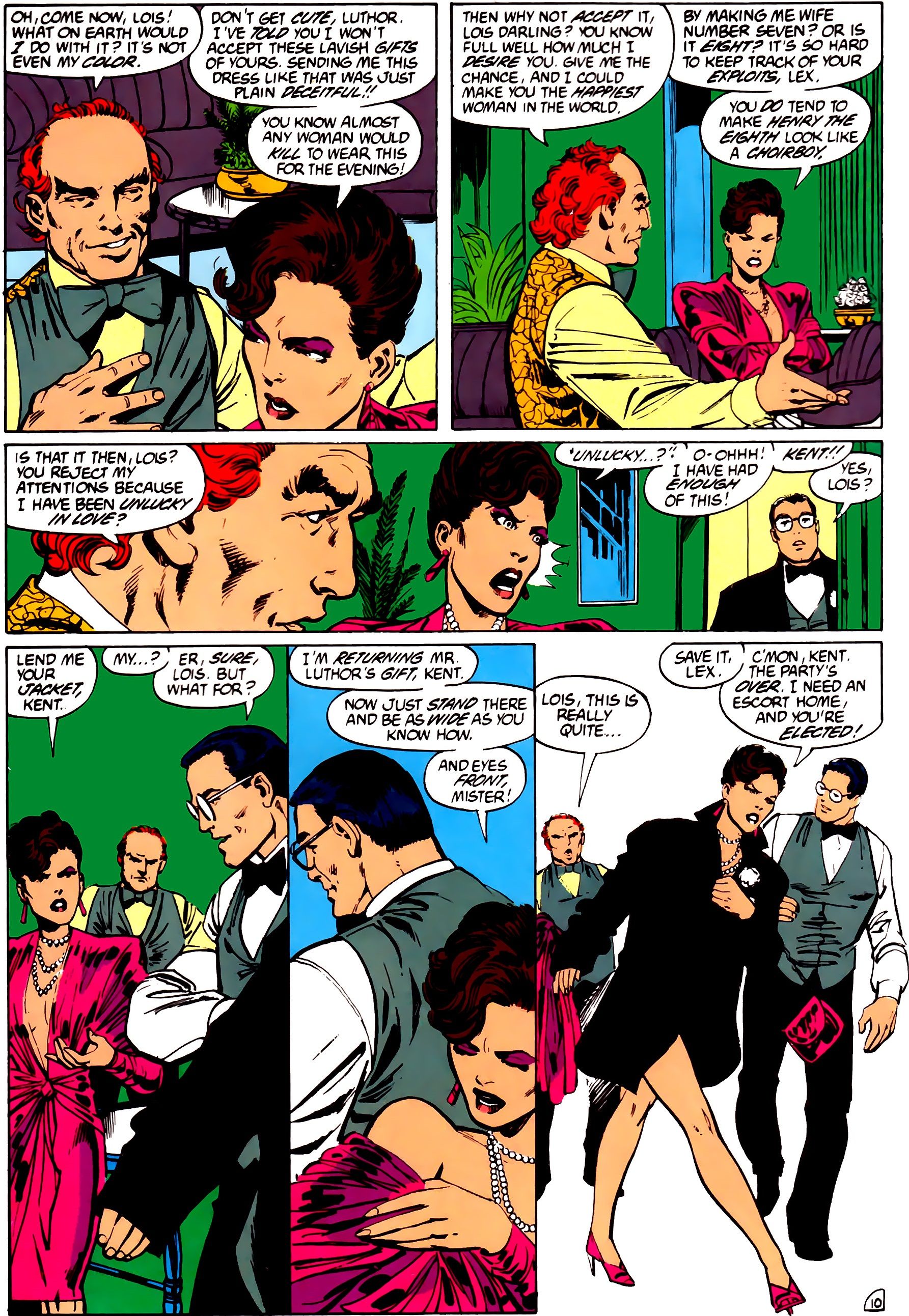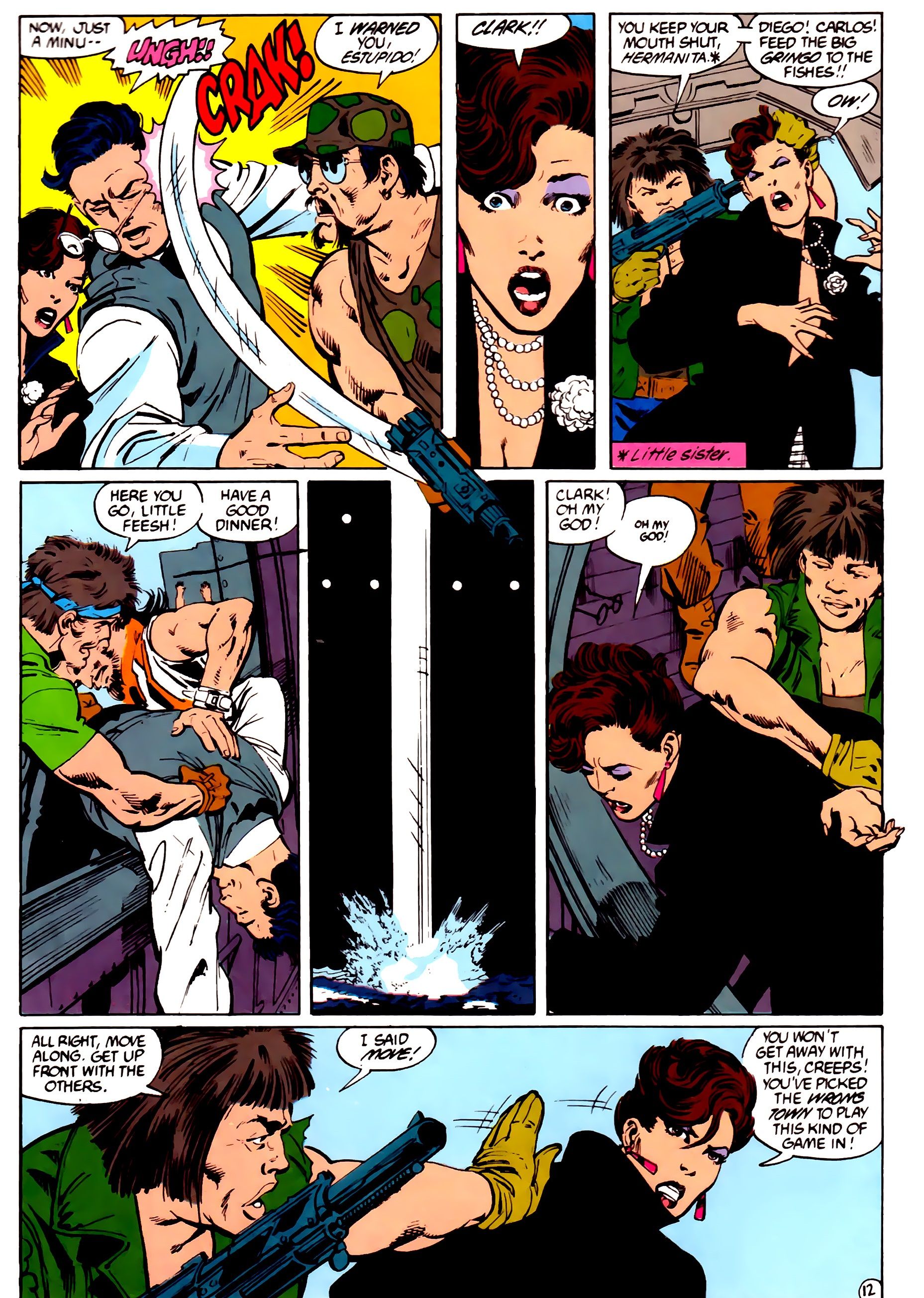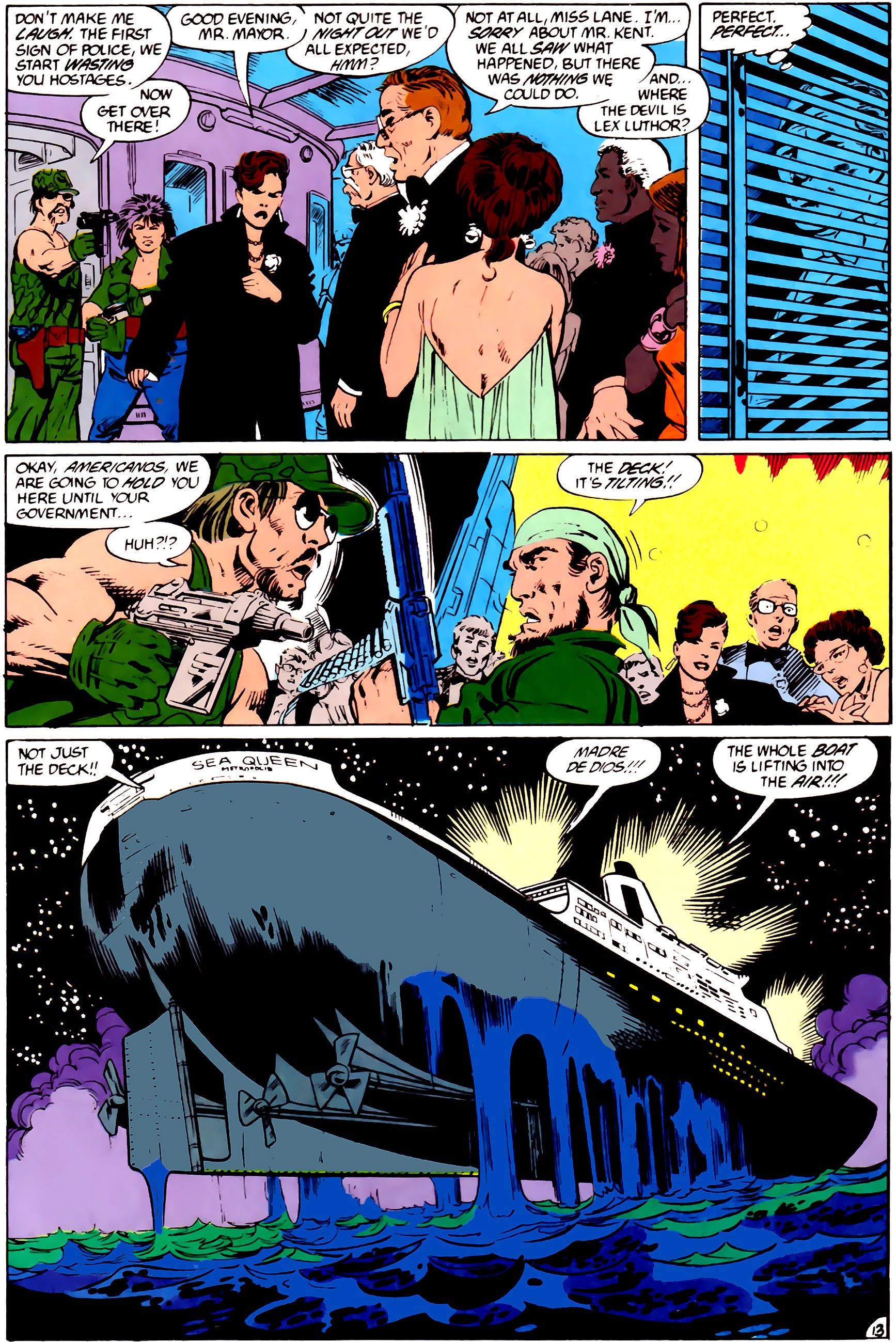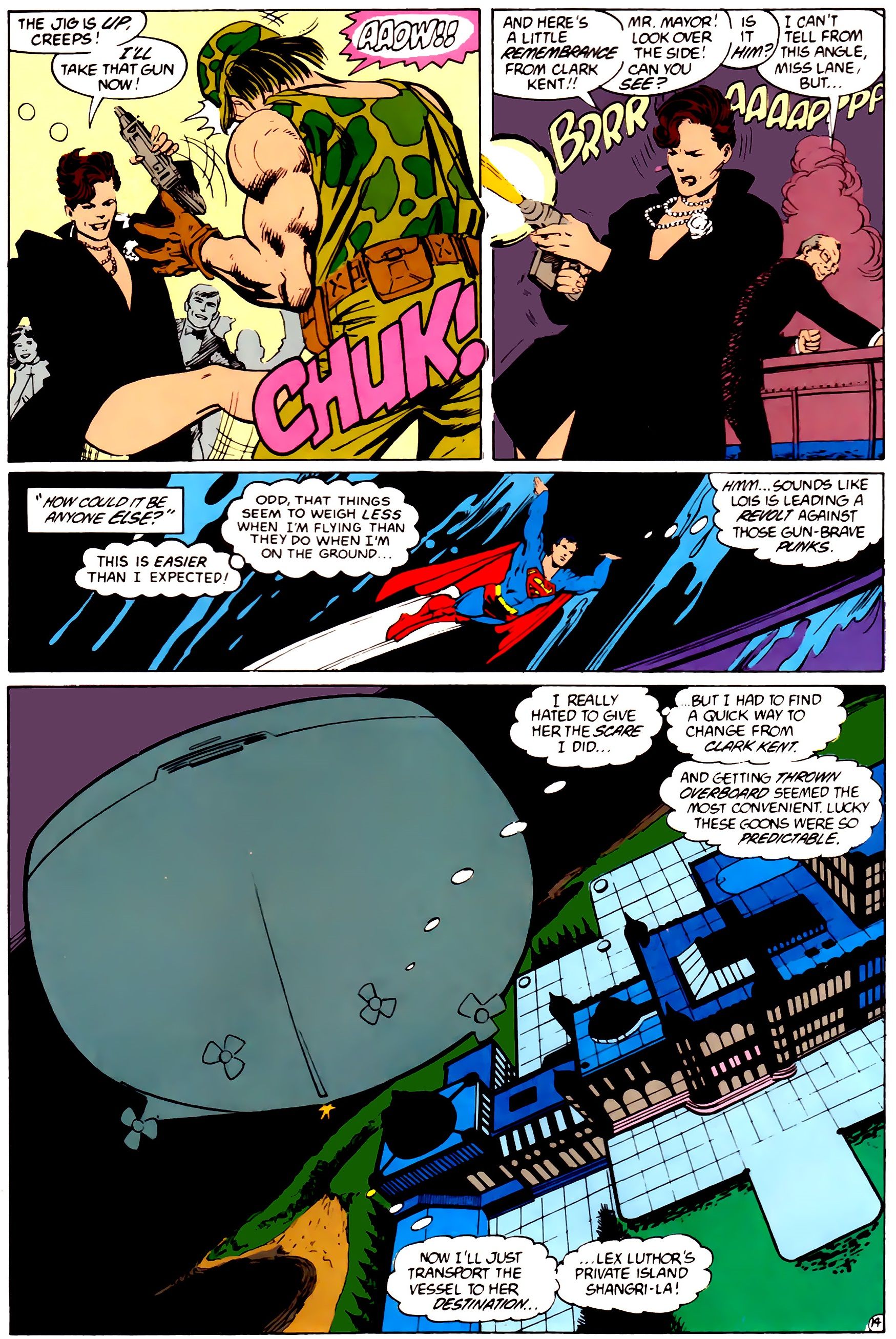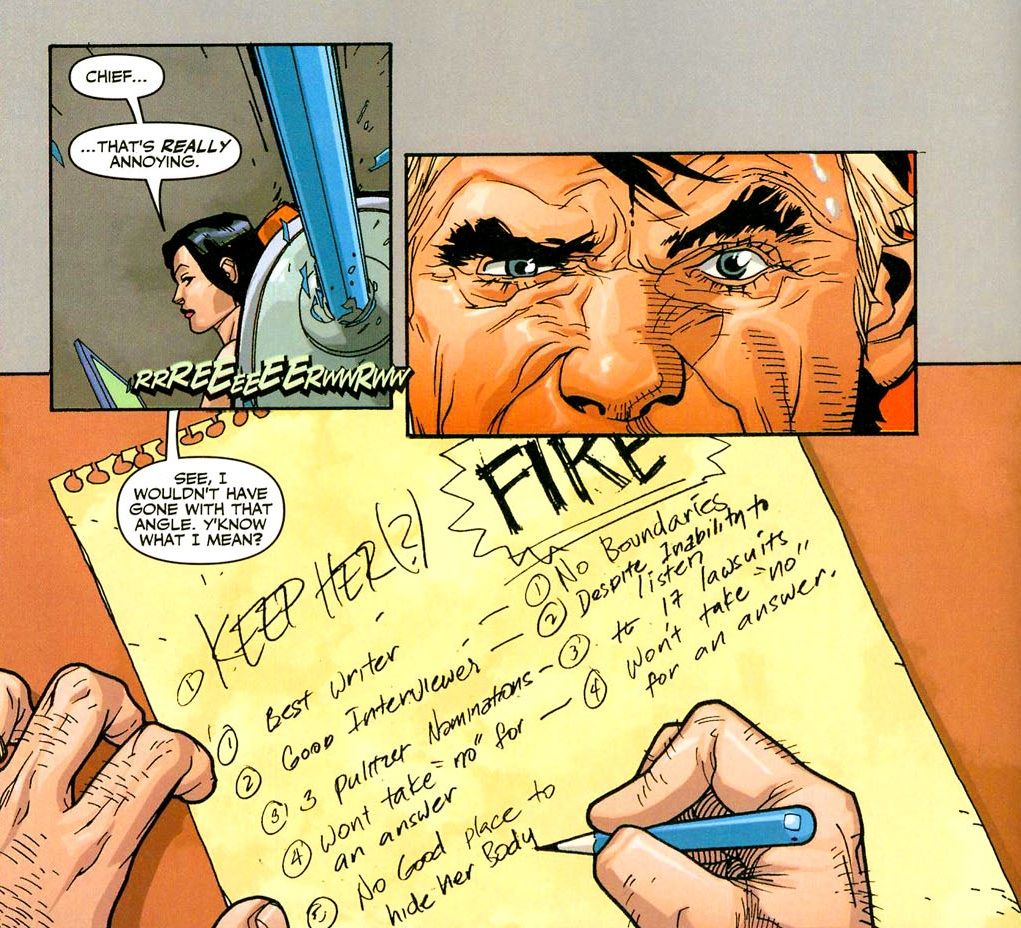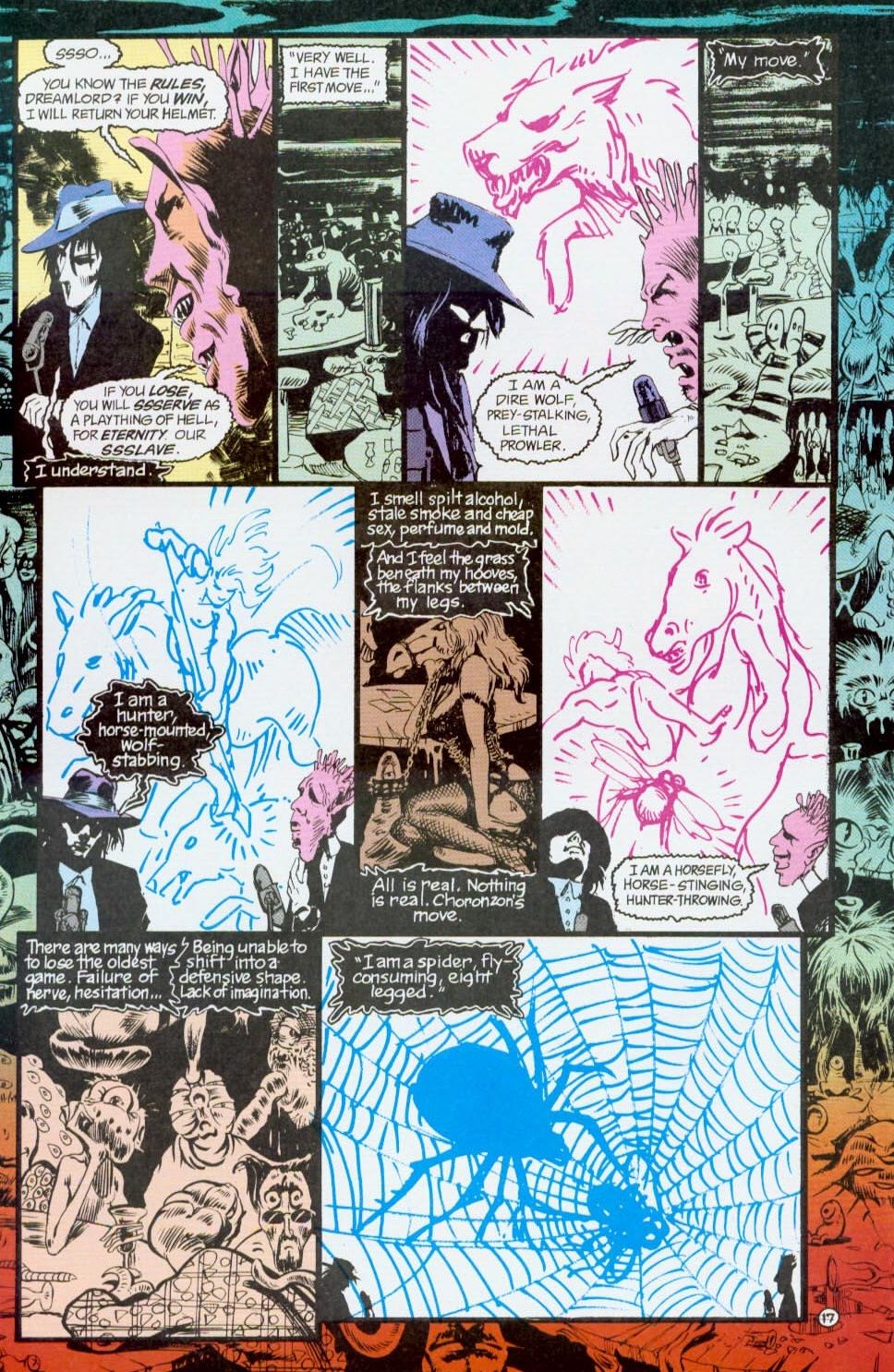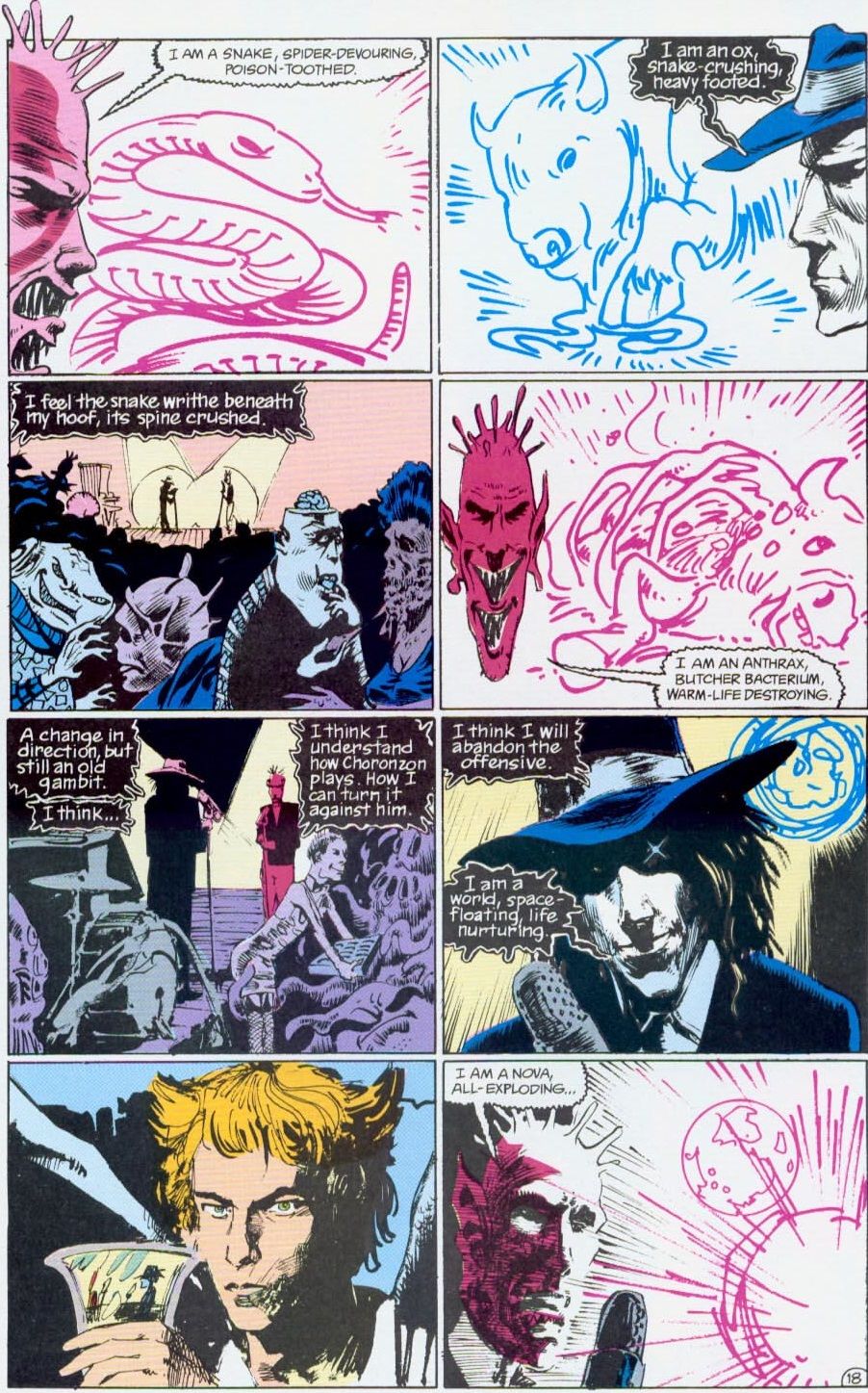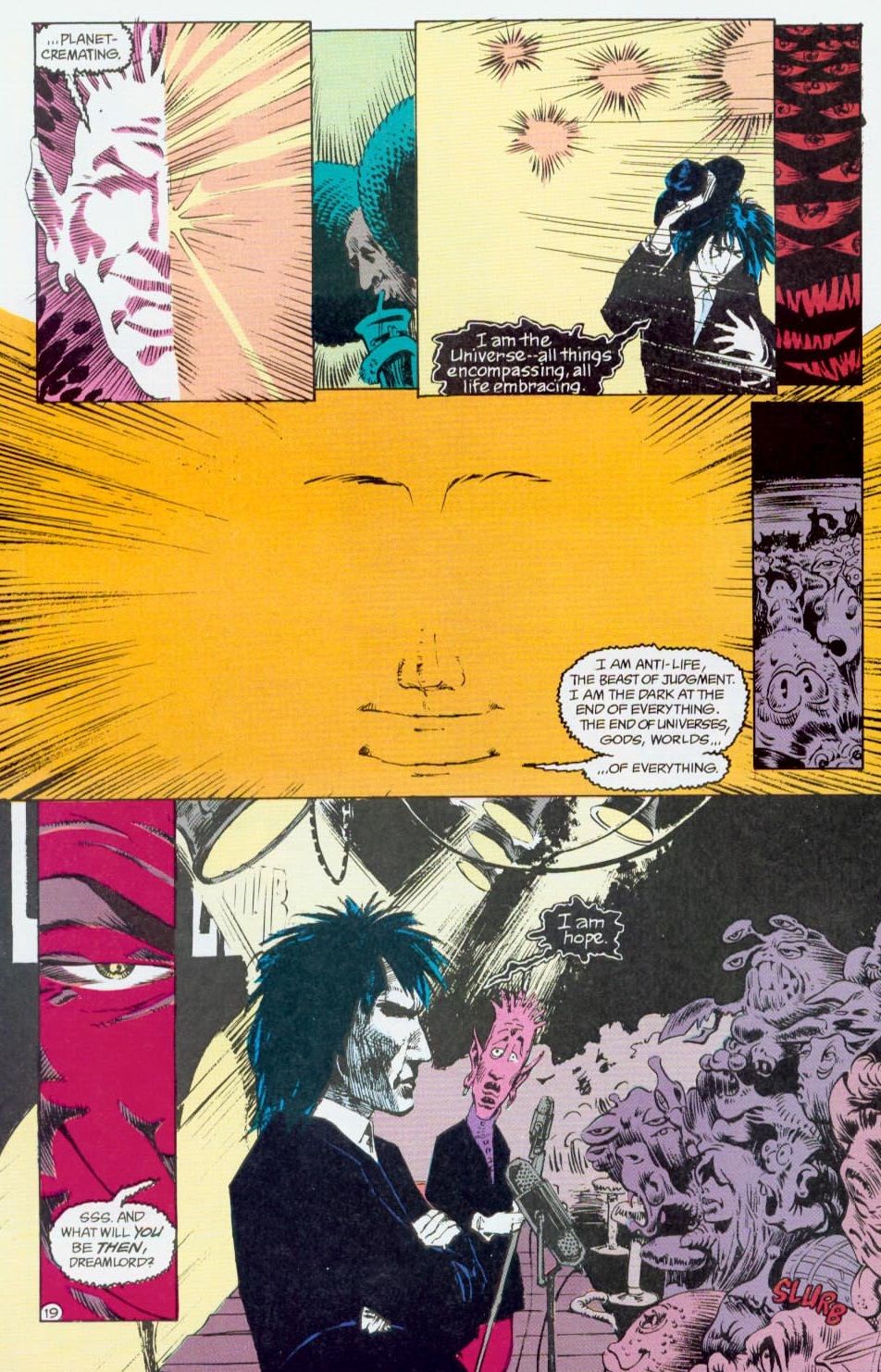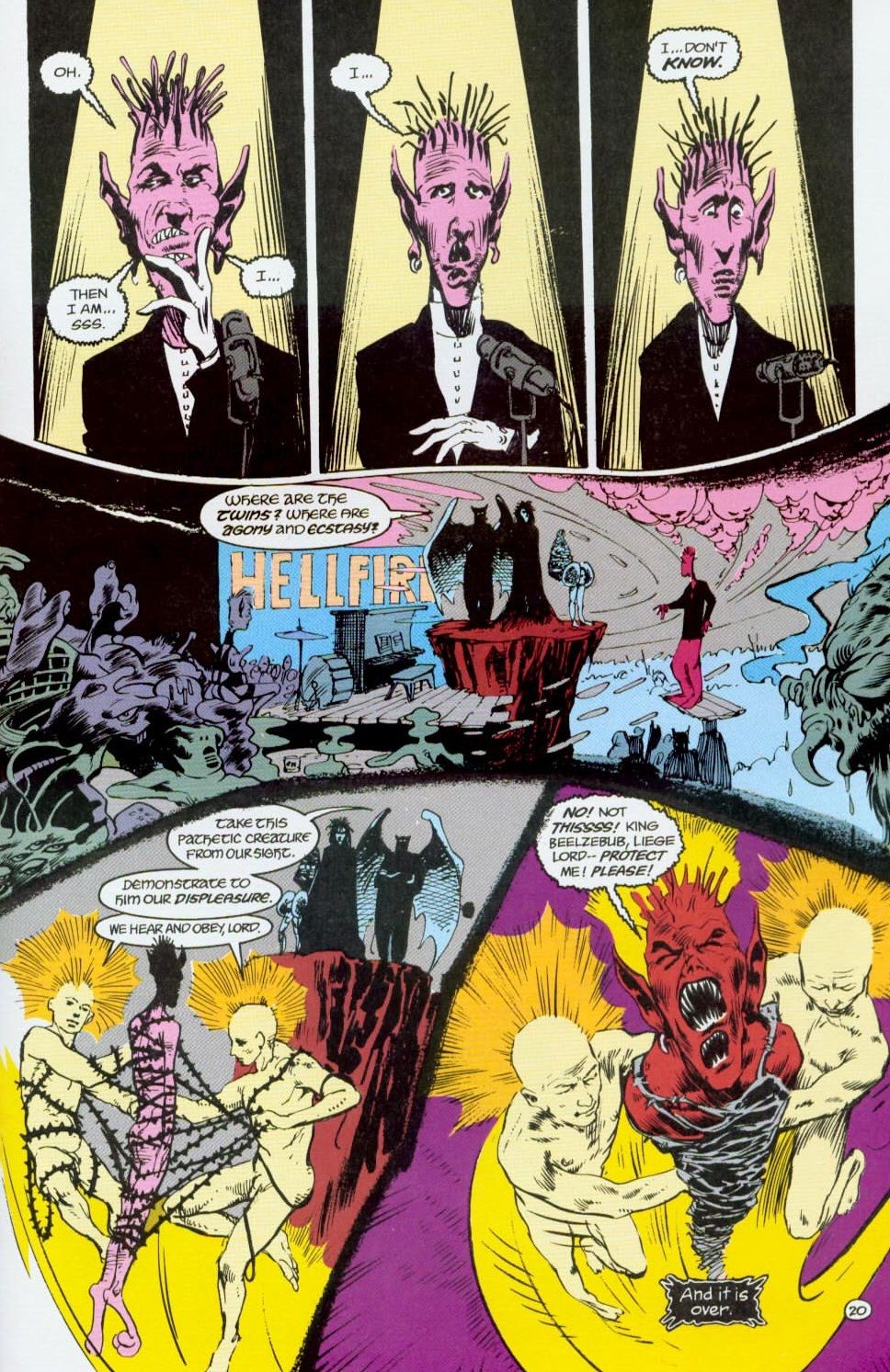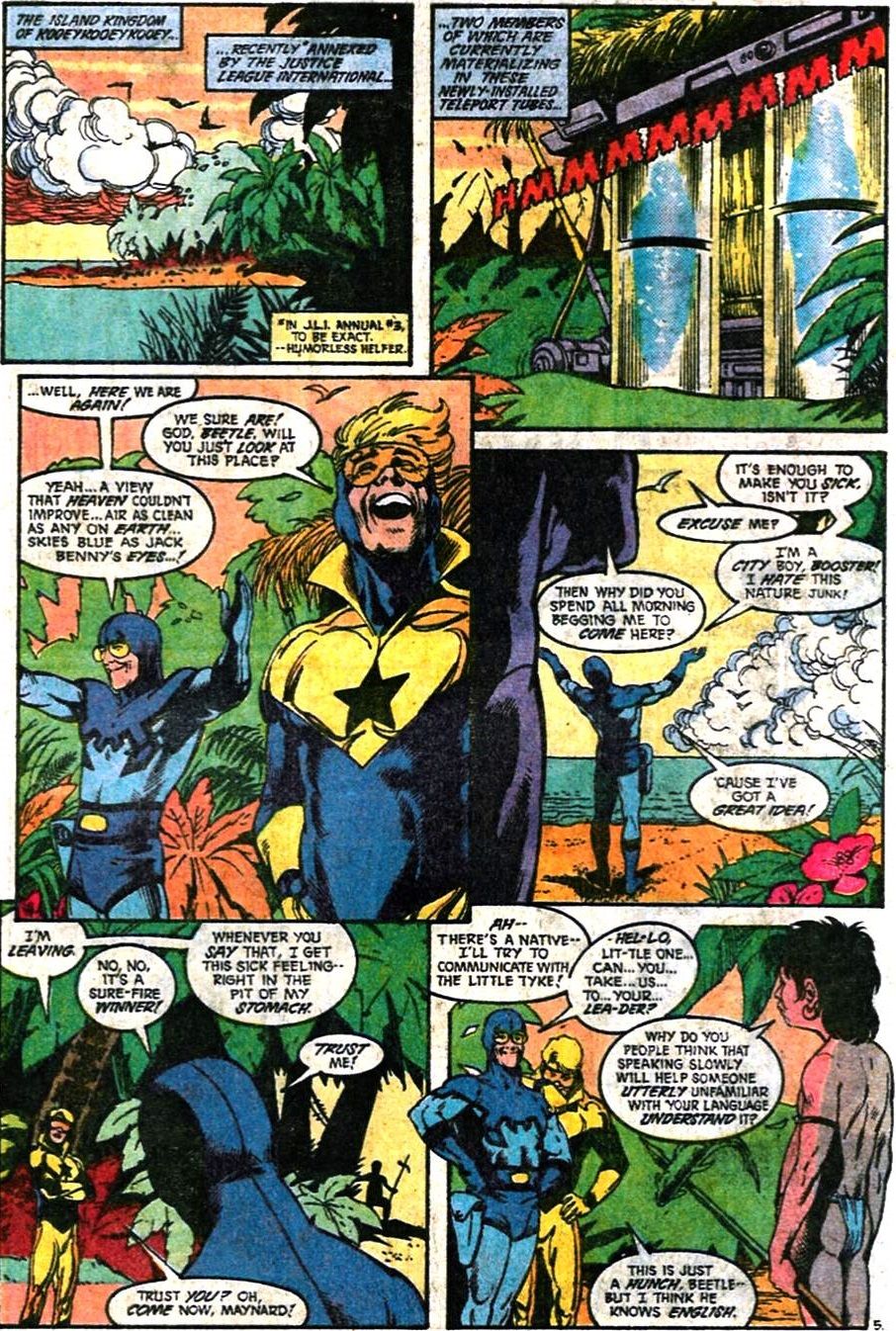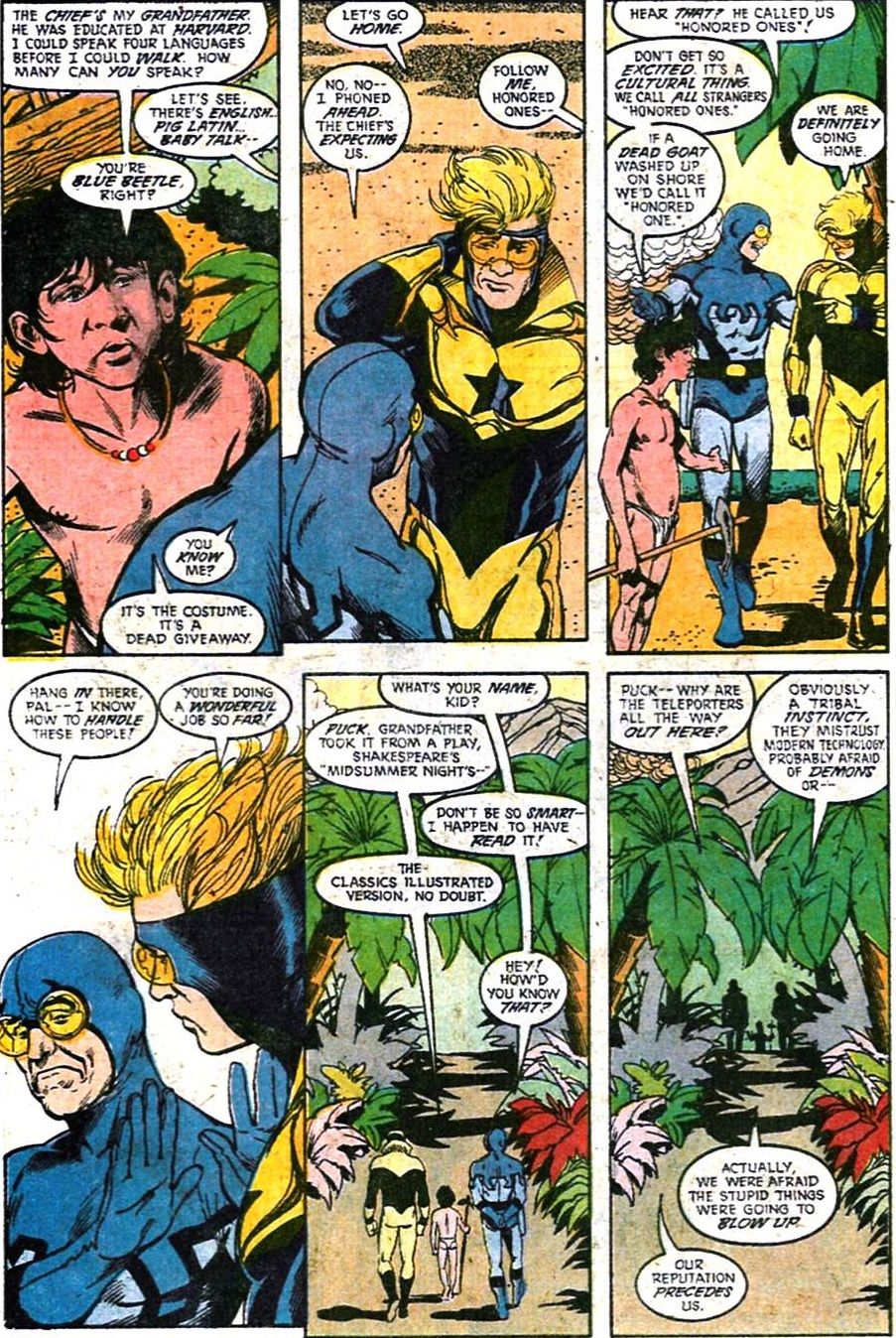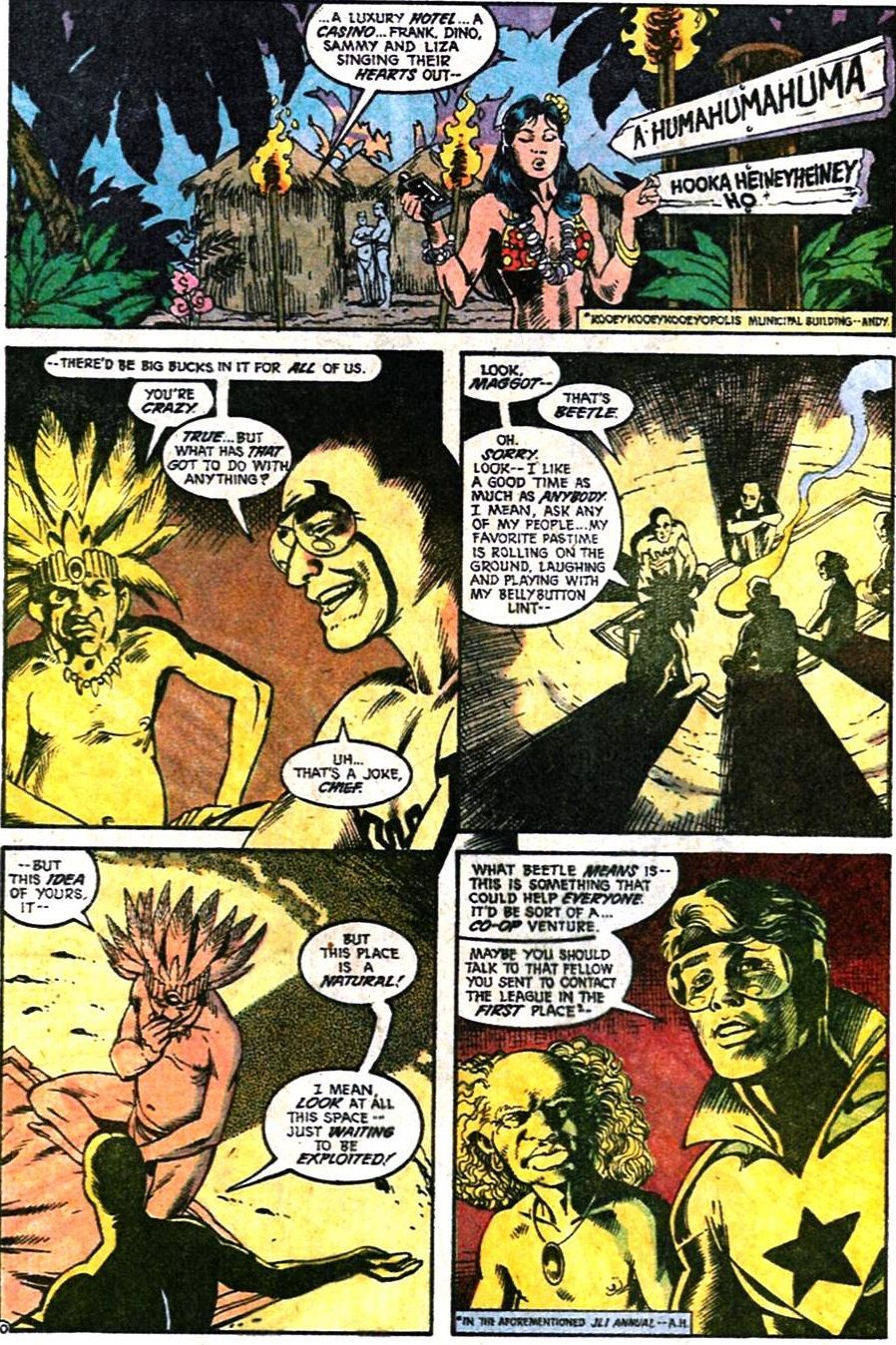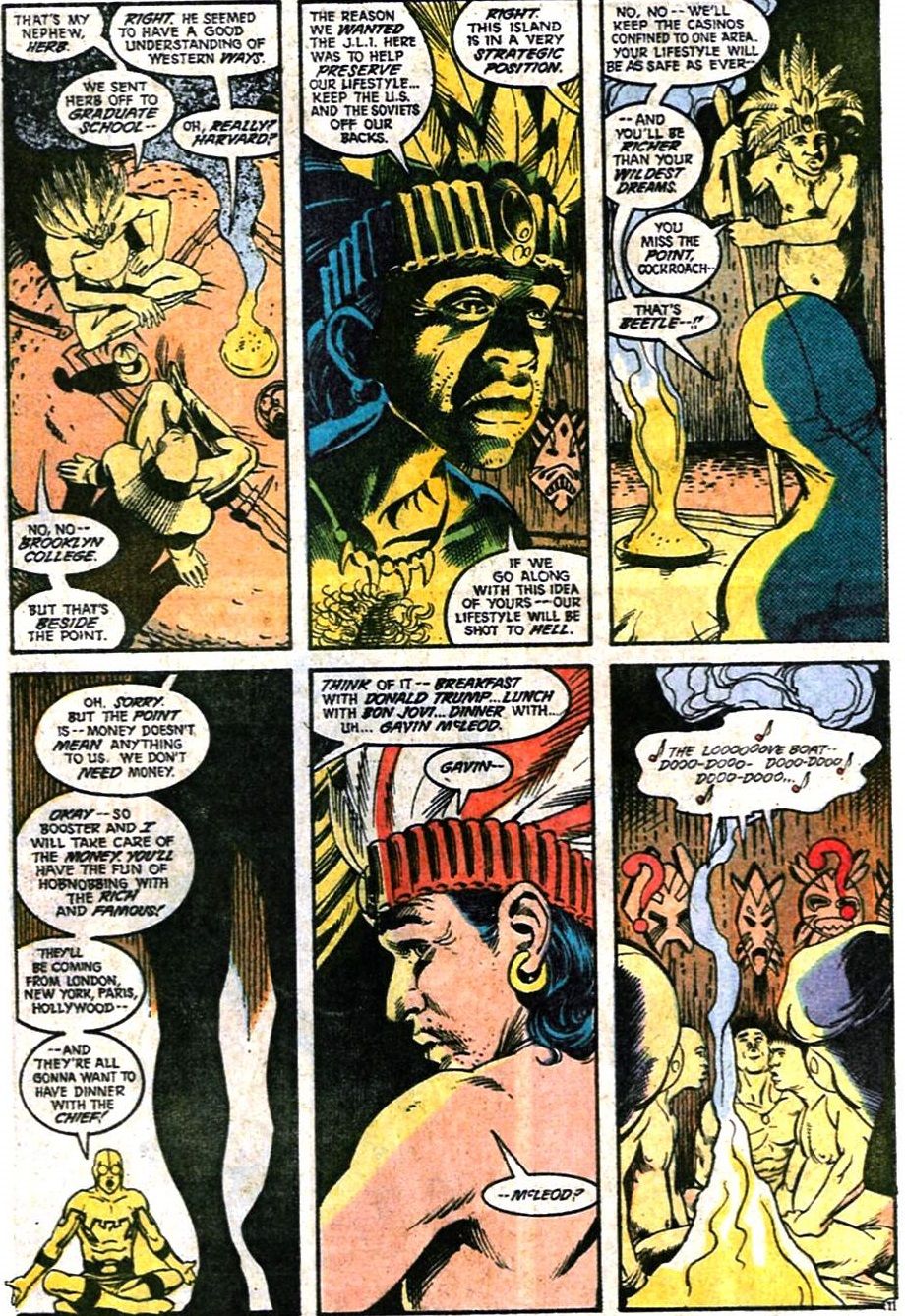After nearly 1,100 ballots were cast, YOU the reader ranked your favorite comic book characters from 1-10. I assigned point totals to each ranking and then tabulated it all into a Top 50 list. We're revealing that list throughout the rest of the month. The countdown continues now...
35. Raven – 368 points (7 first place votes)
Right from the start, when Marv Wolfman and George Perez introduced her when they debuted the New Teen Titans, Raven was a fascinating character in how she was split between good and evil. She was the daughter of Trigon, one of the most evil beings in any dimension, but she had herself a great capacity for good. There was always that pull towards the dark side that caused her to question herself throughout her life. In an early New Teen Titans story, Raven pledged herself to her father in exchange for him leaving Earth alone and we see how terrible it is to be around such a bad guy, where every attempt she makes to do some good is countered by his evil...
A big deal in those early issues of the New Teen Titans was making sure that the various characters all had not only distinct personalities, but personalities that would play well off against one another. Wolfman described it as such:
“Raven was shy and introverted and found it difficult to confide in others. Starfire was outgoing and pure, lusty emotion. Wonder Girl, once again, was directly in the middle. The same kind of triangle was created for the guys. Robin, later Nightwing, was the level-headed and capable leader who, because he was kept on a tight leash by Batman, often felt inadequate for the task at hand. He also had a need to prove himself to Batman. Because everyone in his life had died on him, Changeling believed he had very little to offer anyone and covered it up with an outward bravado. Cyborg was a logical scientist type who rejected that approach to become an angry young man. Nightwing’s logical approach to life and anger toward his “parent” was shared by Cyborg while his feelings of inadequacy were shared by Changeling. Cyborg and Changeling had also been physically altered by their parents, and that helped bring them together.
The characters were created so they would play off each other, but they were still only words on paper. They needed to have real life breathed into them. That happened when George Pérez came onto the scene."
Throughout her history, writers have found a lot of story mileage out of having Raven turn evil and then eventually return to normal. She has also died and been reborn and, like a lot of the Teen Titans, has been sort of de-aged over the years to the point where she is now a teenager in the comics.
Like most of the other Teen Titans, though, one of the biggest things for her has been her usage on the cartoon series Teen Titans and then Teen Titans Go, where she is a more toned down version of that good/evil dichotomy. Instead, the angle they've gone with is making her sort of a sarcastic being that the fans have really gone for in a big way.
She's the straight person that all of the other Titans' ridiculousness is played off of (while, of course, still maintaining that bizarre demonic father situation).
Raven has become a big favorite among younger fans and DC has capitalized on that with an acclaimed young adults graphic novel featuring the character...
Outside comics media obviously influences a lot of the characters on this list, but I think that Raven's cartoon popularity probably gave her a much bigger boost than others. Of course, her comic book past was great, too, as Marv Wolfman really has done a marvelous job on her over the years.
34. Alfred Pennyworth – 375 points (3 first place votes)
Introduced by Bill Finger, Bob Kane and Jerry Robinson, Alfred initially was a rotund goofy little man. He eventually became thin (to tie in with the Batman film serial of the time).
Up until the 1980s, though, Alfred was someone that did not come into Bruce Wayne's life until much later. It was first the Super Powers cartoon but then most notably Frank Miller's Dark Knight Returns and Batman: Year One that changed this, and it was Miller who established Alfred's new sarcastic wit, which Miller patterned after the butler in the film Arthur. Up until this point, Alfred was very much just the loyal servant, offering criticism only when asked. Now he served as a dissenting voice to Batman's crusade. His role as Batman's field doctor also expanded. He went from being a character who consistently appeared in the comics but rarely got much of his own plots (although Gerry Conway notably DID add an espionage background to Alfred during his run on the Batman titles). Now that he was established as Batman's main confident, his role has grown considerably.
In his last regular issue of Batman (before moving on to Batman and Robin and then Batman Incorporated), Grant Morrison has Alfred explain his role in the life of Batman beautifully...
He's definitely a unique supporting character. He has been one of the most translated supporting characters in outside media, as well, as while Robin comes and goes in Batman's film depictions, there is always an Alfred in the movies. Recently, he even received his own TV series where we get to see the stuff that he got up to before he became the Wayne's butler.
33. Lois Lane- 384 points (1 first place vote)
Created by Jerry Siegel and Joe Shuster, Lois Lane is the ultimate in the badass take-no-prisoners, leap-before-you-look reporter trope, making her more than a match for Superman as both a friend, possible lover and current wife.
In the early days of the character, she wasn't even really an investigative reporter, but it was the use of the character in the TV series that really cemented Lois's reputation as an investigator, even if a lot of her investigations revolved around trying to prove that Superman was really Clark Kent.
Then Margot Kidder took over the role in the Superman films of the late 1970s/early 1980s and her spirited version of the character was soon reflected in the comics, as well. John Byrne was heavily influenced by Kidder's take on Lois when he rebooted the Superman mythos in the mid-1980s. Here, we see Byrne show Lois' feisty attitude in Man of Steel #4...
and after the party is taken over by terrorists...
The sight of Lois slinging a machine gun dressed in a man's suitjacket because she wouldn't be indebted to anyone is, well, pretty darn awesome. That is how great Lois Lane is. Mark Waid had an awesome panel in Superman: Birthright that captured how some of the things that make her great also sometimes make her difficult to be around...
Eventually, Lois married Clark Kent and discovered his identity. DC got rid of that aspect when they rebooted the character in the New 52, but we then discovered that the pre-New 52 versions of Lois and Clark were still around and had even had a kid. They returned to the main DC Universe and took over from their New 52 selves (it became a whole thing). Soon, Superman's secret identity will be revealed and it will be fascinating to see how Lois' reputation as a journalist will be affected by her sitting on such a major story all of these years.
32. Dream – 386 points (7 first place votes)
Dream or Morpheus, of the comic series, Sandman, was created by Neil Gaiman and artists Sam Kieth and Mike Dringenberg. He is one of the Endless, a group of powerful siblings who are personifications of aspects of the universe. Dream is the lord of, what else, but dreams (and stories, for that matter).
Dream lives in a castle at the heart of his world, which is called the Dreaming.
He basically busies himself with the world of the Dreaming.
At the end of the Sandman series, Morpheus "dies" and is replaced by a new Dream - Daniel.
Early in his run, we learn that he had been imprisoned for decades. He must get his objects of power before he returns to take over the Dreaming. One of them is owned by a demon. So he must battle with the demon for it, with amazing results...
Such great work by Gaiman.
One of the most fascinating aspects of Morpheus is that he was initially a much crueler being before his imprisonment and in fact, much of Gaiman's stories with Morpheus dealt with him atoning for his past actions, but he had a strange way of going about things, as he was not really used to this new approach to the world. He was trying to atone for his past misdeeds (like banishing his lost love to hell after she rejected him) but it was hard for him to figure out how to do it. He tended to look at stuff from a black or white perspective and his sister, Death, tried to help him see things from a more interesting perspective.
31. Booster Gold – 413 points (6 first place votes)
Created by Dan Jurgens, Michael Jon Carter was living a dead-end life in the future when he decided to steal some artifacts from a museum he was working at and travel back in time to the 20th century to become a superhero.
Using the artifacts, Carter fashioned himself a superhero suit, complete with a force field, flight and laser beams. Originally meaning to name himself Goldstar, he accidentally answered his nickname Booster (from when he played football) and while trying to change it to Goldstar, instead got tagged with the name Booster Gold.
Booster was obsessed with wealth and fame, using his superhero powers to make him money. His creator, Jurgens, described the character's unique appeal this way...
I thought he'd fit the DCU because he was different than most anyone else he had.
He was also of the time, in that celebrity culture was being elevated through things like People Magazine and Entertainment Tonight. Things were changing a bit, and I always thought that, like athletes, movie stars and more, that a hero might play that to his advantage.
He eventually joined Justice League International, where he became good friends with Ted Kord, the Blue Beetle. The two men had a number of money-making schemes, including their infamous casino plot...
"Blue and Gold" was very popular with the fans and at one point, they were one of the most in-demand pairings at DC Comics.
Years later, when Blue Beetle was investigating some bad events, Booster went to help his friend, but was incapacitated, so was unable to be there when his friend, Ted, was murdered by Maxwell Lord, a man that Ted and Booster thought was their friend (and the organizer of Justice League International).
Booster then helped Rip Hunter basically save the entire multiverse, and was then tasked with becoming a watchdog over famous superheroes, traveling through time to make sure that no bad guys kill heroes before they BECOME heroes. To do so, Booster had to remain anonymous, so no one knew what he was doing (and thereby draw attention to it). As a result, Booster Gold - the man who loves fame, could tell no one that he was one of the greatest heroes on Earth. During this time, he had a particularly painful adventure where he tried to fix things that he WASN'T supposed to change, like Barbara Gordon being shot. Each time it went horribly wrong, as time wouldn't let him fix it...
Recently, Booster Gold was caught up in some trouble during Heroes in Crisis, but it is nice to see that since Blue Beetle is once again alive in the DC Universe, the Blue and Gold team has reformed and they remain dedicated friends to each other, especially in Booster's time of need (where he was suspected of possibly murdering a bunch of innocent superheroes at a superhero trauma rehab center).

